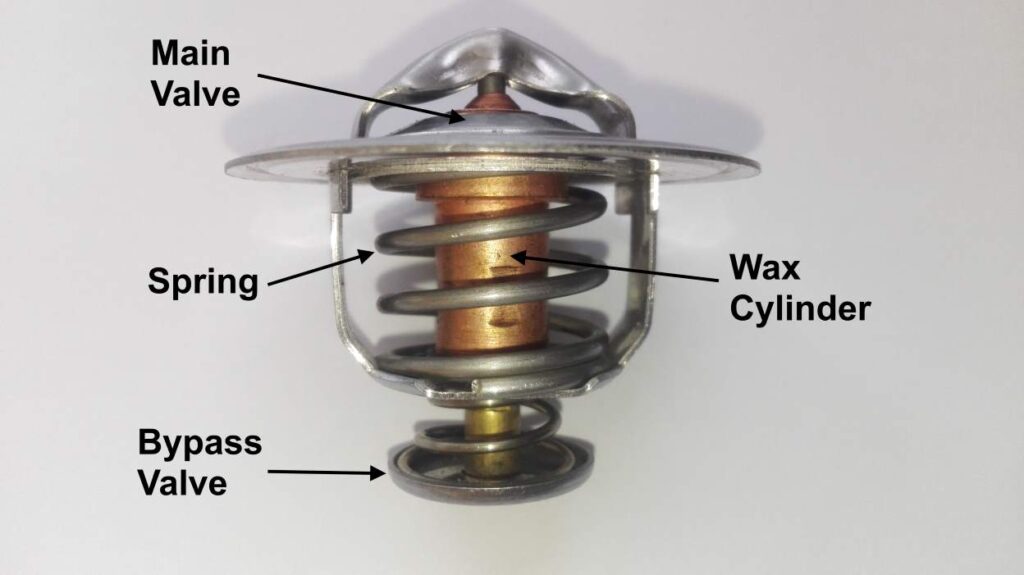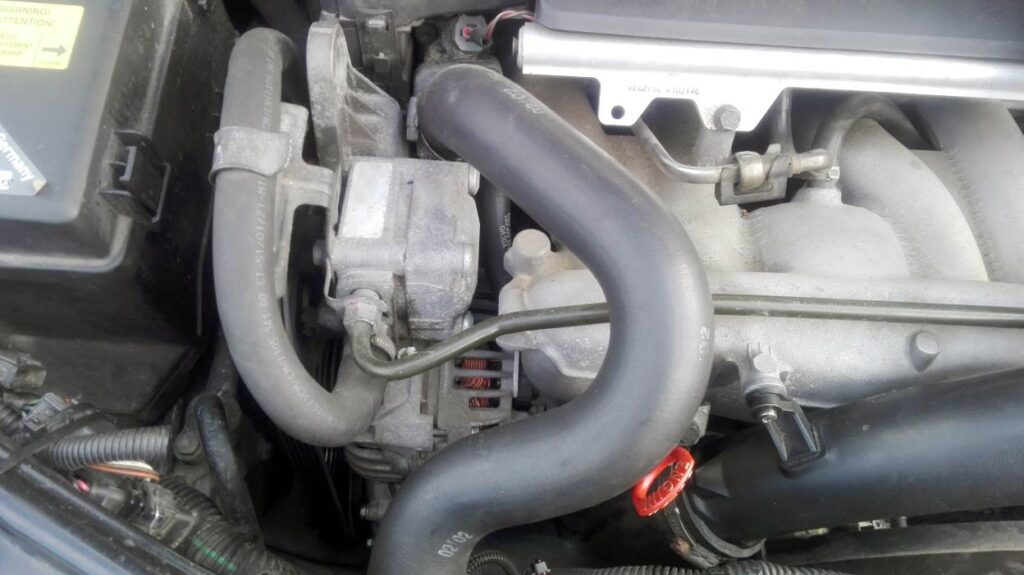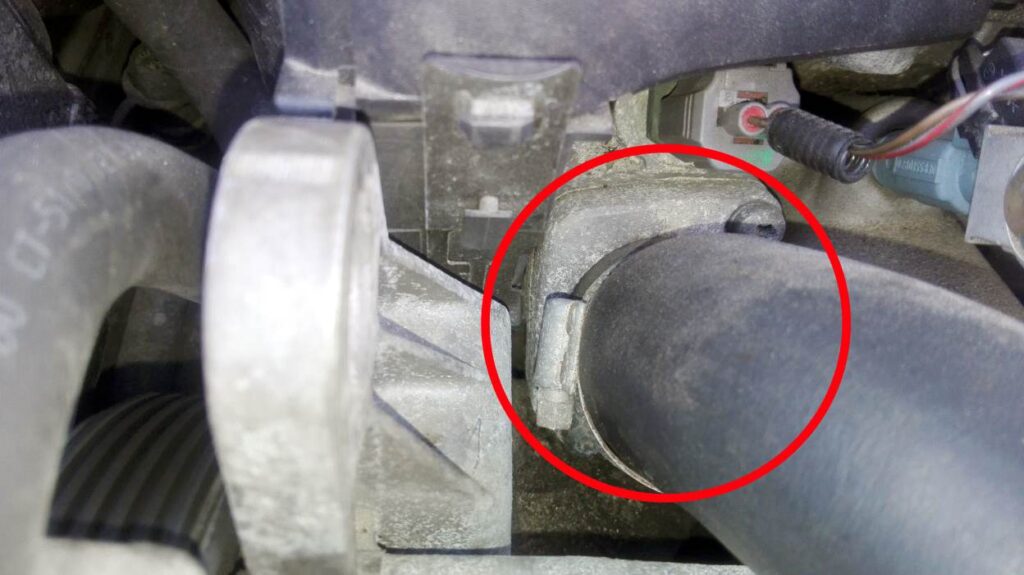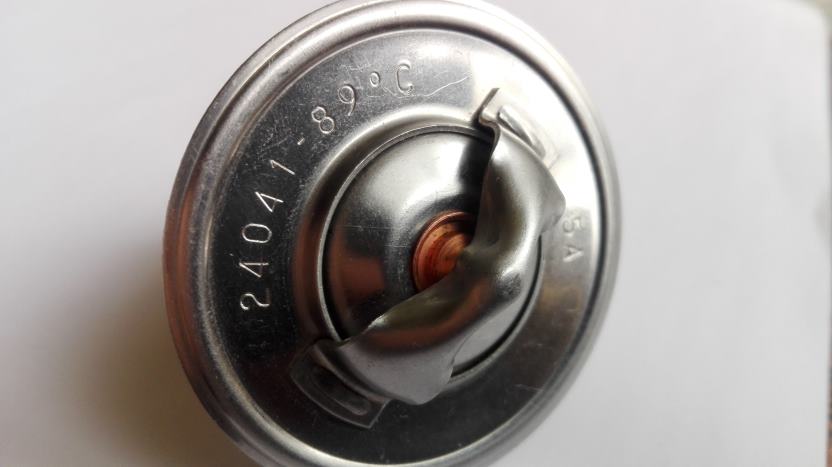A bad or a failing thermostat in a car is most definitely a big pain in the buttock region.
The reason why testing a bad thermostat sucks is because it‘s most often hidden under tons of other engine components (why are they always in the way?!) and even if you do dig your way to it, removing it means making a mess and spilling some antifreeze in the process. There must be a better way, right?
Well, if you’re reading this article, then I bet you’ve heard tales from old mechanics that there is a secret way to avoid having to completely remove that awkwardly placed thermostat in order to test it and you’d be right – there really is a way.
But before we jump right into the method, let’s get you up to speed with a brief overview on car thermostats and why cars need them in the first place.
What Is a Car Thermostat and What Does It Do?
The thermostat is one of the simplest, yet most important parts of your car’s cooling system. Its job is to regulate the flow of coolant to the air-cooled radiator in the front.

Now, you might be asking – Why should a car regulate coolant flow to the radiator? Can’t it just allow the coolant to move freely?
You can certainly allow coolant to move freely into the radiator, but the reason why engineers put a thermostat in the way is because the car’s engine needs to reach the operating temperature as soon as possible.
The reason for that is that most engine wear occurs during the initial first minutes before the engine reaches the operating temperature of around 195 degrees Fahrenheit. Therefore, the faster the engine reaches its operating temperature, the less wear occurs – that’s why you should avoid buying cars that were only used for short drives to the mall.
So, when you first start your car in the morning, the thermostat is closed and it blocks antifreeze from going through the radiator and cooling itself. This forces the coolant to circulate inside the engine and allows the engine to warm up faster.
Once your car’s engine is all warmed up and the coolant temperature has reached somewhere around 185 degrees Fahrenheit, the thermostat opens up and allows coolant to flow through the radiator in order to start cooling the engine, and to keep it at a toasty 195 degrees Fahrenheit.
Where Is a Car Thermostat Located?
Locating the thermostat on a car isn’t difficult. Find the upper hose on your radiator and follow it to the engine. The end of the hose will be attached to the thermostat housing – the housing really sticks out and is quite obvious once you’ve seen it on a few different engines. It might even have a coolant temperate sensor next to it.
Here is where the top radiator hose is located on this Volvo:

And if you follow it from the radiator into the engine block, you’ll run into the thermostat housing:

Now, in some rare cases, the thermostat might be located on the bottom hose. If that’s the case, follow the bottom hose to the engine just like you would with the top hose.
How to Test a Car Thermostat Without Removing It
The whole procedure is incredibly simple but yields very reliable results. We’re going to be using the thermostat’s ability to open at a certain temperature to our advantage when doing this test.
- Make sure your engine is cold. In order to do this test, you’ll need for your engine to be cold, so let the car sit and cool down, or better yet – do it in the morning.
- Start the engine and let it run until the temperature gauge starts to move. You can drive around a little bit but leaving it to idle is fine too. All we’re looking for right now is to warm up the coolant for a few minutes – just enough to reliably tell that it’s warm.
- Stop the engine and feel the temperature of the top radiator hose.
- If your car’s thermostat is working correctly, the hose should feel cool. Remember how the thermostat only opens up at around 185 degrees Fahrenheit? A good thermostat should not allow warm coolant to flow through the hose until the coolant gets hot enough.
- If the hose is warm it means that your car’s thermostat has gone bad and is stuck open. It’s letting coolant pass through when it should not.
- If the top radiator hose is cool, start the engine again and let the engine reach its operating temperature. This is a great sign but we’re not done yet. If your car’s thermostat is not stuck open, it doesn’t mean that it isn’t stuck closed. However, a stuck closed thermostat is rare and when it happens – you’ll definitely notice because the engine will start to overheat, therefore you can skip the last two steps.
- Shut the engine off and feel the warmth of the top radiator hose again. Be careful – at this point, the hose should be hot, so cover it with a rag when touching it.
- If the top radiator hose is hot – your thermostat is working fine. On the other hand, if the hose is still cool then your thermostat is stuck closed.
How to Test a Car Thermostat Out of the Car
Just in case you’re unsure how to test your car’s thermostat when you’ve removed it from the car, here are the step by step instructions:
- Determine the opening temperature of the thermostat. It’s usually stamped on the thermostat itself – this is the exact temperature required for your thermostat to open up.
- Place the thermostat in boiling water (if you don’t have a thermometer).
- Check whether the thermostat is now open. A good thermostat should start opening up when placed in hot water. If it’s still closed – you’ve got a bad thermostat that is stuck closed.

There is a more accurate way to do this but it requires a thermometer to know the exact temperature of the water:
- Determine the opening temperature of the thermostat.
- Place the thermostat in room temperature water and start boiling it.
- Keep checking the temperature of the water with your thermometer.
- Once the water has reached the thermostat‘s opening temperature, the thermostat should start opening up.
- If the water is way above the thermostat‘s opening temperature and it‘s still closed – you‘ve got a bad thermostat that is stuck closed.
Car Thermostat Frequently Asked Questions (FAQ)
Can I fix a bad car thermostat?
No, and if you could – there would be no point in doing so since they’re cheaper to buy than to rebuild.
How much does it cost to replace car thermostat?
It depends on the amount of labor required but on average, replacing a thermostat would damage your wallet by about 150-300$. Thermostats are usually pretty cheap and sell for 15-60$, however, paying for the labor is what costs the most.
Is replacing a car thermostat hard?
It depends on the car and how many extra steps are needed to get to the thermostat. If your car‘s thermostat is easily accessible, changing it is a pretty easy DIY job and shouldn‘t take more than 30 minutes to complete.
How long does a car thermostat last?
Again, it depends on the manufacturer but generally, most car thermostats are built to last for 5 to 10 years.
My new car thermostat is not opening. What‘s wrong?
It‘s not uncommon to buy a new thermostat that is of poor quality and is already stuck closed but it can also be that you‘ve got the wrong thermostat. If it has the same opening temperature stamped on it as your old one and it‘s not opening up – you‘ve bought a faulty thermostat.
Resources:
What is a car’s thermostat (and what does it do)? – Haynes

Eddie is the co-founder of CarCareCamp.com, and the site’s primary contributor.
Under his belt, Eddie has a bachelor’s degree in Automotive Electronics Engineering and almost a decade of experience working as a semi-truck technician (specializing in electrics).
